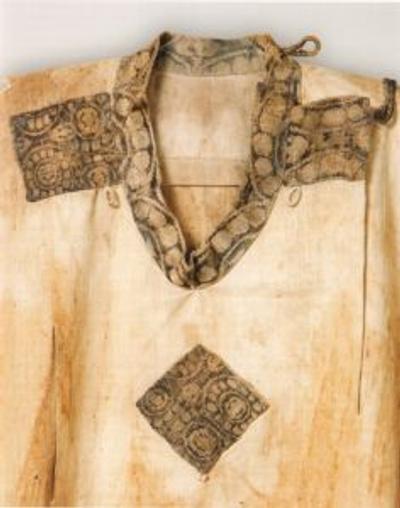Description
The silk pattern what we call double-axes now was the most commonly used silk among the people living in the North Caucasus in the Early Medieval period. We find this pattern as a border decoration in dozens of garments. They used it not only on clothes but even on a shoe. This popularity is likely connected to the low grade nature of this silk, likely it was among the most economical solution for a lot of people to acquire and use the precious silk material.
Our reconstruction of this variant of the double-axe pattern is made after the pattern of a woman dress from Moshchevaya Balka.
The double-axe pattern comes from the simplification and schematization of the famous and widely used boar heads patterns.
Sources: Artwork: Szakonyi Balázs





Silk fragments with boar heads from Central Asia
7-8th century

Confronting boar heads on a silk textile from the 9th century

Ierusalimskaya's drawing about the schematization and evolution of the board head-double-axe pattern
A: Sassanian prototypes
B:Sogdian imitations
C: variations of the double-axe motif
Some examples for the double-axe patterned silk:





MET Museum
Ierusalimskaya, Anna A.: Мощевая Балка. Необычный археологический памятник на Северокавказском шёлковом пути, Moshtcevaya Balka, An unusual archeological site at the North Caucasus Silk Road, St. Petersburg 2012.
Spuhler, Friedrich: Pre-Islamic Carpets and Textiles from Eastern Lands, New York 2014











